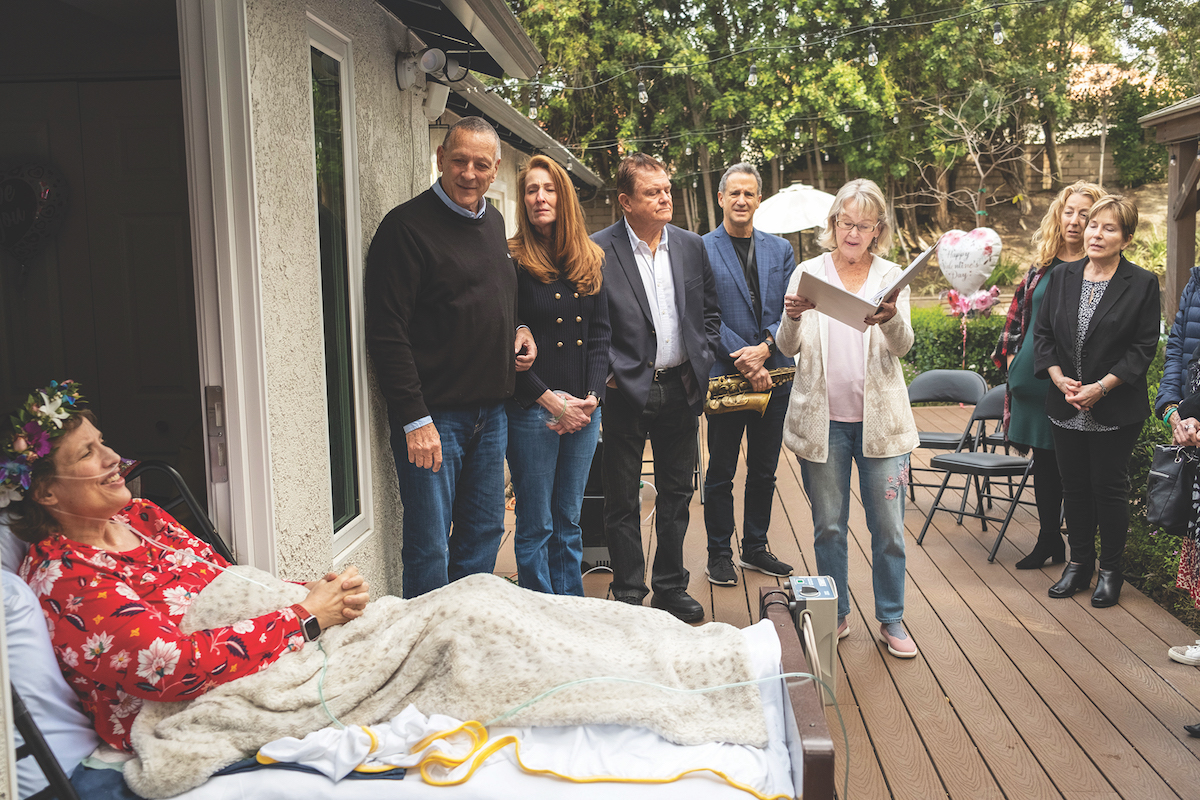
Southern California Hospice Foundation marks the one-year anniversary of opening The Heavenly Home, a place for end-of-life care for those with nowhere else to go.
By Sharon Stello
Growing up in Newport Beach, Megan Wymer was outgoing and active in sports from soccer to swimming, participating in the Junior Lifeguard Program and, later, the track team while attending Newport Harbor High School. But, during her senior year of college in Colorado, Wymer suffered a traumatic brain injury in a bicycling accident. From that point in 1992, Wymer went through extensive rehabilitation and would live in group homes with assisted care for the rest of her life.
Despite this challenge, she became active with marketing for High Hopes Head Injury Program, a nonprofit focused on brain injury rehabilitation. And Wymer told anyone who would listen to wear a helmet; if only she had worn a helmet, perhaps it would have made a difference.
“Even after her head injury, she was the most loving and compassionate and caring [person with a] big, beautiful smile,” says Wymer’s mother, Dorothy Kraus. “… She was everybody’s friend. She wanted to know everything there was [to know] about them. She left indelible marks.”
In 2016, Wymer was diagnosed with breast cancer and went through a year of chemotherapy and radiation treatment. All seemed well until late 2021 when doctors discovered the cancer had returned and spread to her liver and lungs. Wymer opted to try an immunotherapy drug instead of chemotherapy again, but the cancer still spread. A persistent cough landed Wymer in the emergency room in January 2023 and doctors decided it was time for her to start hospice.
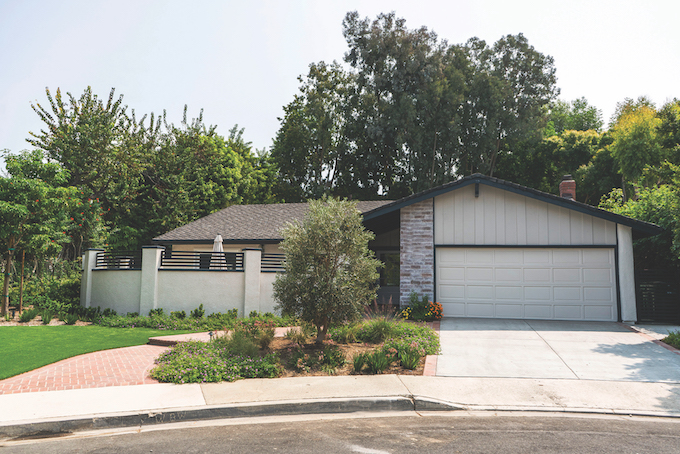
Wymer’s group home wasn’t equipped for the round-the-clock care that she needed in hospice. Kraus wasn’t sure what they were going to do. Then a social worker on Wymer’s Hoag medical team mentioned she had heard about a place called The Heavenly Home, a low-cost assisted living facility for those with terminal illnesses. The first of its kind in Orange County, the home is operated by Costa Mesa-based Southern California Hospice Foundation.
Kraus went to check it out and was so impressed that Wymer moved into the Mission Viejo home on its opening day, Feb. 8, 2023. Wymer would pass away less than a month later, on March 4, but Kraus says the staff made her daughter’s final days special. At Wymer’s request, they even held a baptism ceremony in the beautiful backyard. And perhaps the biggest gift of all: Kraus was able to spend time with her daughter without worrying about the details of her care.
“It was because of Heavenly Home that I could just breathe and be with my daughter,” says Kraus, who spent more than 30 years advocating for Wymer, making sure she got the treatment she needed and looking out for her best interests. “… All of a sudden, I was a mom [again]. It was the most amazing feeling. And Heavenly Home brought me that wonderful space to be her mom.”
A Caring Place
Kraus says the caregivers were kind and accommodating as Wymer—who tended to say whatever she was thinking since the head injury affected her ability to filter—was very inquisitive and wanted to know everything about their lives.
“They were a wonderful team,” Kraus says. “ … The staff member that was leaving after her day shift sat down and met with the night shift person and went through everything about Megan’s day. … What I never had experienced in a group home [before] was this true continuity of care. … [And] Megan liked to tell jokes, so they’d sit and laugh. … They were fabulous. I can’t say enough about them.”
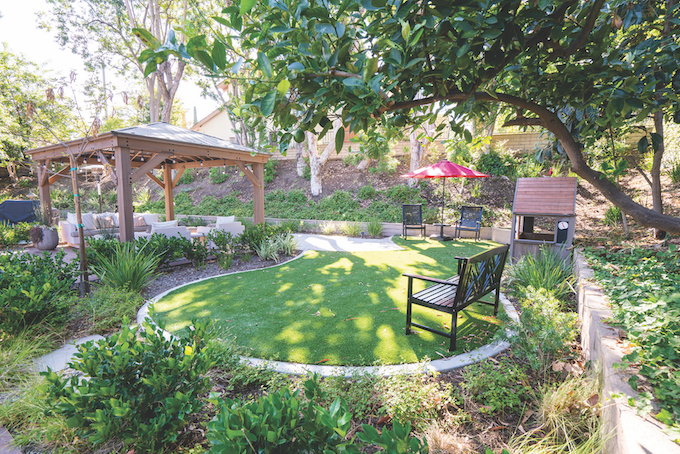
In the past year, The Heavenly Home has cared for 15 residents with several different hospice providers. The house has enough space for six residents at any one time. Staff members accommodate any special food requests, allowing residents to eat whatever they want. The peaceful backyard features a water fountain, a rose garden, an extensive patio, benches and even a playhouse for children or grandchildren who come to visit.
“Every resident’s room has outdoor access wide enough to wheel a hospital bed outside,” says Michelle Wulfestieg, executive director of the Southern California Hospice Foundation, which operates the home. “… We felt that was important to be able to have sunshine therapy and be able to go outside. One of the residents we have now is completely bed bound, but he loves the outdoors and he wheels out in his hospital bed all the time.”
Wulfestieg, who has been through her own health challenges, sees this work as her calling. A two-time stroke survivor, Wulfestieg was in a deep coma and not expected to survive. When she finally awoke, she had to relearn how to walk and do everyday tasks. And she remains paralyzed on her right side from radiation in attempts to treat a rare brain lesion as a child. But now, she has the chance to help others and bring them moments of hope and happiness.
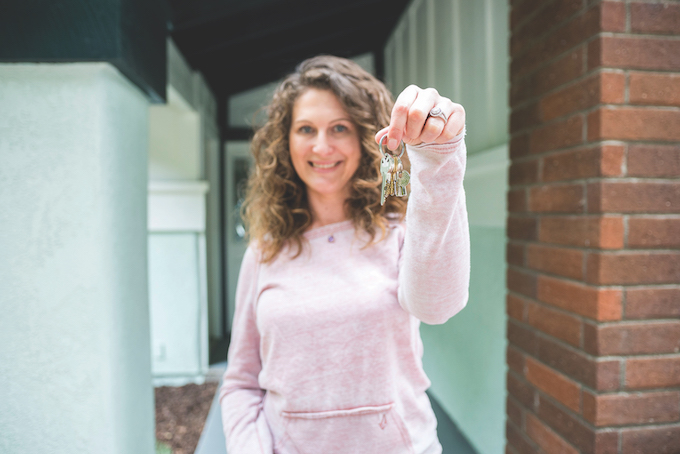
“For me, it’s so uplifting,” she says. “It’s actually the opposite of what you would expect, because I feel like I’m able to bring so much joy to families and patients. And, actually, when families come to our facility, I would say nearly every single family who walks in … starts crying because their loved one is going to a place that’s so wonderful and so beautiful and they’re going to receive the best care possible. It’s just overwhelming. …
“I feel like dying is a part of life and it’s something we’re all going to face at some point. But what I’ve learned in my 20 years [working] in hospice—and especially since opening The Heavenly Home—is people are still alive even while they’re dying. … You’re still able to bring them moments of joy and comfort and peace and happiness, and so we love to party at The Heavenly Home. … I feel like every moment needs to be celebrated.”
The home has brought in Elvis impersonators, a weekly massage therapist and volunteers who play music for the residents or offer pet therapy. “We’ve had miniature ponies trot through the house with little Build-A-Bear shoes on their hooves,” Wulfestieg says. “… It’s really just about living. Any birthday, we celebrate—we have huge parties for birthdays [or] any special occasion.”
Building a Home
It’s been a long journey to open the home and reach this point. The Southern California Hospice Foundation, which started in 2002, always had the goal of opening a low-cost home for those in hospice. Additionally, the foundation raises awareness of palliative care and hospice options for adults and children while also serving the nonmedical needs of terminally ill patients and their family: providing bereavement support, offering transportation to doctor’s appointments and granting wishes, such as a child getting to meet their Hollywood hero before they die.
When Wulfestieg, a Newport Beach resident, was hired as the organization’s executive director in 2010, she would speak at events and always mention the group’s desire to build a home for the terminally ill. One day, someone said, “You always talk about this goal, but what are you doing to achieve it?”
“I’m like, ‘Oh my Gosh, it’s so true. What am I doing about it?’ Because unless you have actions behind your words, nothing ever happens,” Wulfestieg says. “So I decided to become intentional about making this end-of-life care home a reality.”
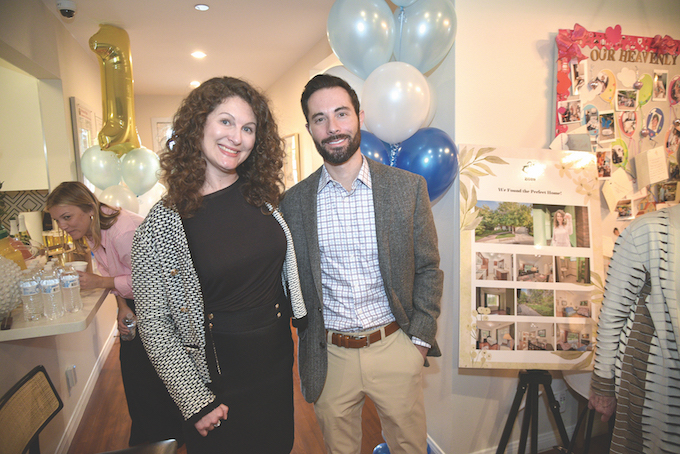
She researched these types of homes, visiting several throughout the state. At each place, she asked the operators what worked well and what they wished they had done differently. With this knowledge, Wulfestieg began creating a plan. Then came the hard part: raising the money. She had organized charity events before, but had never launched a capital campaign. So she assembled an advisory council and planned the first fundraiser in 2017 at The Bungalow in Corona del Mar; advisory council member Kay Walker’s husband, Jim Walker, owns the restaurant.
The first fundraiser brought in $200,000 and soon the total raised climbed to $400,000 toward the $3.5 million goal. Wulfestieg says you’re not supposed to announce a capital campaign until half of the money has been raised, but she couldn’t pass up an opportunity when she was in front of hundreds of people at City National Grove of Anaheim, accepting an award on National Philanthropy Day in 2018.
“We were so far away [from halfway], but I knew in my heart that God had called me to do this and he would show me the way and part the waters. And so I got up on stage and I announced it and, lo and behold, the donors started to come,” Wulfestieg says.
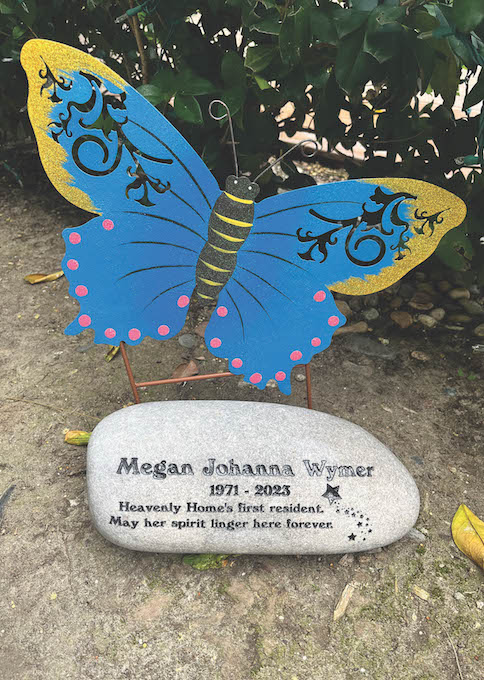
She received a phone call from a person with a private family foundation, who said if Wulfestieg could find a house to buy, she would provide the rest of the money needed to purchase it. “So I found the house and I walked in and I just knew with all my heart and soul that this was it,” Wulfestieg says. The Hospice Foundation board president toured the home and gave the OK. The family foundation wired the money the next week, allowing the home to be purchased in an all-cash offer of $795,000. That was in 2019.
“And then COVID hit. But, luckily, health care and construction are [both] an essential service so we were able to continue on with our work and continue with the renovation,” Wulfestieg says.
She raised $350,000 for interior and exterior renovations to make it “a beautiful sanctuary of hope.” Several corporations and small businesses made in-kind donations of materials or services such as interior and landscape design. The remodel was finished in 2021 and then licensing took a full year as this was the first board-and-care facility in Orange County that would be licensed to have up to six terminally ill residents. Notably, Heavenly Home is not a hospice provider. Staff from those agencies come into the home to monitor patients and adjust medications.
The sliding scale fee for residents of Heavenly Home is based on what they can afford to pay. Elderly patients contribute their social security income. And, thanks to a pilot program in California, a home that’s licensed as a residential care facility for the elderly (RCFE) can receive Medi-Cal reimbursements to cover a portion of the cost for low-income residents. Heavenly Home can save a patient or their family thousands of dollars compared to hiring someone and staying in their own home.
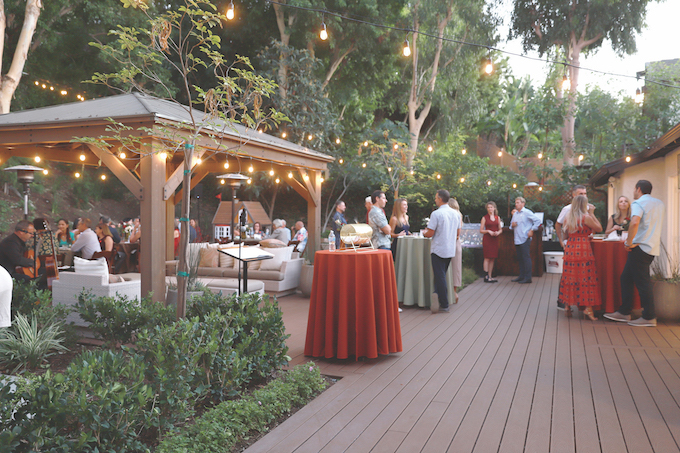
“If you’re looking to have in-home, 24-hour care, you’re looking at a minimum of $25,000 a month all the way up to, I would say, $35,000 or $40,000 a month. And that’s for a private, in-home caregiver,” Wulfestieg says. “And that is just unaffordable for most families. We charge per day rather than per year or month, … because the average length of stay in hospice is three weeks.”
The foundation would like to eventually build a second home, but is now focused on fundraising for its endowment to help cover operations. When starting the endowment, a donor offered to give $1 million if she could raise a matching $1 million; his only request was that the home be named after his late wife, Jerry, who was on hospice in OC. So, Heavenly Home is also known as Jerry’s Heavenly Home.
Wulfestieg hopes to grow the current $2 million endowment to $5 million. The foundation only allows itself to spend 5% of the endowment per year, which means $100,000. “If we got our endowment to $5 million, that would generate $250,000 and we would be able to not have to worry about fundraising as much or [could] reduce our fee even more,” Wulfestieg says.
A Place to Call Home
Wulfestieg wants residents to feel at home and enjoy their final days as much as they can, encouraing interests like art or cooking. Staff provide 24-hour caregiving, cook the meals, do the laundry and run the activities. “We become an extension of their family,” Wulfestieg says.
A current resident, Dr. Archie Cachola, has been at Heavenly Home since last April. Formerly a pediatrician at Children’s Hospital of Orange County and affiliated with Hoag before that, he began having back pain, but brushed it off as the aches and pains of getting older—until it became debilitating and he finally went to the hospital. Doctors determined he had thyroid cancer that had spread to his bones. He underwent surgery to remove part of a tumor around his spine, followed by radiation therapy, but it wasn’t enough. He entered into hospice and required assistance, so he could no longer live by himself. After several group homes that left much to be desired, Cachola finally found Heavenly Home through his hospice provider.
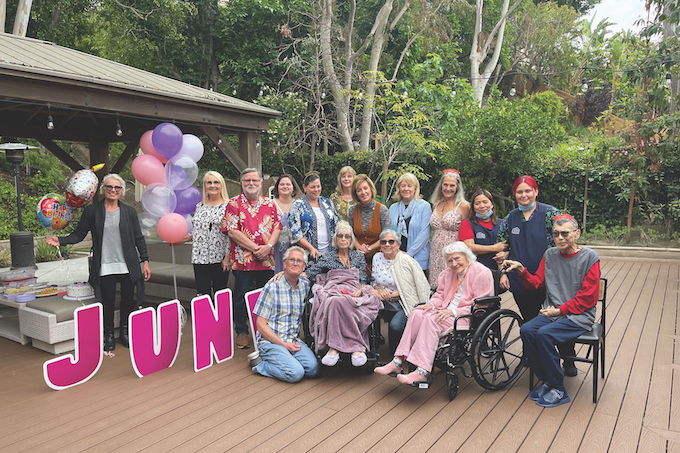
Wulfestieg says although Cachola earned a doctor’s salary, he was generous and donated much of that income over his lifetime. A sliding scale fee structure allows him to stay at Heavenly Home.
“It’s beautiful. … I couldn’t ask for more. I have everything,” Cachola says. “… It’s so quiet and peaceful. Everybody’s so friendly. … This is an example of what a facility should be. That’s why you call it Heavenly Home.”
He also enjoys the free weekly massages and recalls the party they had for his 71st birthday when he donned a chef’s hat to help cook a meal for the other residents; before developing cancer, Cachola loved to cook and even ran a catering company in addition to his work as a physician.
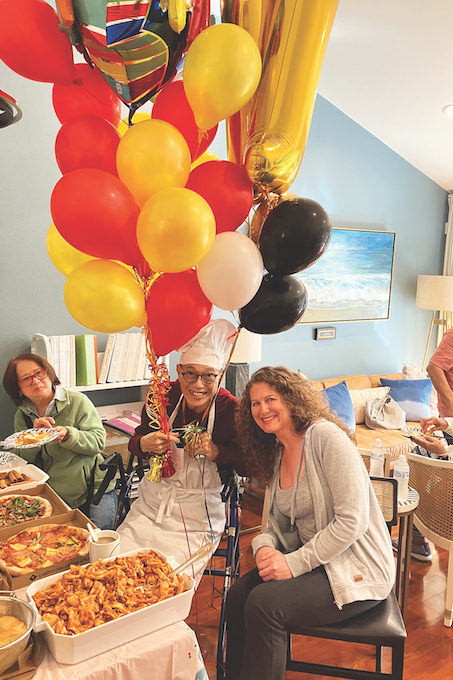
Over the time that Cachola has lived at Heavenly Home, he’s shared stories about children he treated. Wulfestieg recalls one about an 8-year-old boy with cancer whose family didn’t have enough money for a Halloween costume, so Cachola went out and bought him a Zorro costume so he could enjoy dressing up for Halloween while in the hospital.
And then there was Amy, a little girl with spinal meningitis who came to the hospital with a fever and slipped into a coma for three or four months. Fighting back tears, Cachola recalls patiently sitting and talking to her day after day and encouraging her to respond by moving even a finger. And finally, she did move her fingers and eventually woke up. “It was a miracle,” he says.
“… It’s just one happy, fruitful experience,” Cachola says of his rewarding career helping kids. “I could not ask for more. … It’s just a blessing. I can die tomorrow. I can die the following day. I can die the next week. And I will be so happy.”
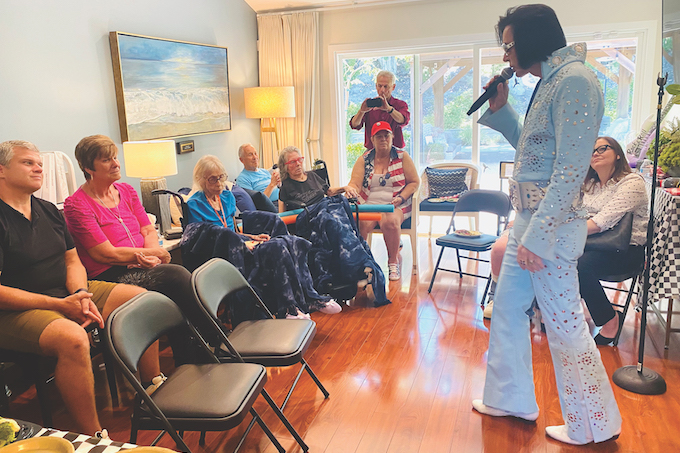
Notably, at Heavenly Home, Cachola stays in the same room where Wymer spent her final days before passing away last March. Kraus, Wymer’s mother, came back in February for the one-year anniversary of Heavenly Home’s opening. A stone with an inscription in Wymer’s memory as the first resident can be found in the garden. While Wymer’s ashes are interred at a local cemetery, Kraus says part of her will always be at this home.
“She’s around,” Kraus says. “Her spirit lingers there, and forever she’ll be loved.”
How to Help
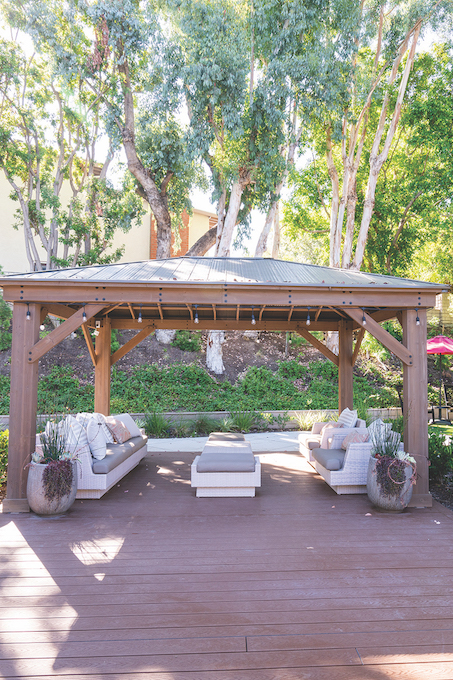
Ways to support the Southern California Hospice Foundation and Heavenly Home:
Donate money, stocks or real estate, which can be earmarked for the Heavenly Home endowment, if desired.
Include the foundation or Heavenly Home endowment in your estate planning. An annual luncheon at Balboa Bay Club honors the Legacy Club, those who have included the foundation in their estate plans.
Volunteer on the Hospice Advisory Council, on event committees or at The Heavenly Home, offering companionship, art, music, photography or other talents to help enhance the residents’ lives.
Attend a fundraiser event, such as the Dolled Up luncheon at The Pacific Club on May 1 or the annual golf tournament at Newport Beach Country Club on Sept. 16.
Photos courtesy of Southern California Hospice Foundation




